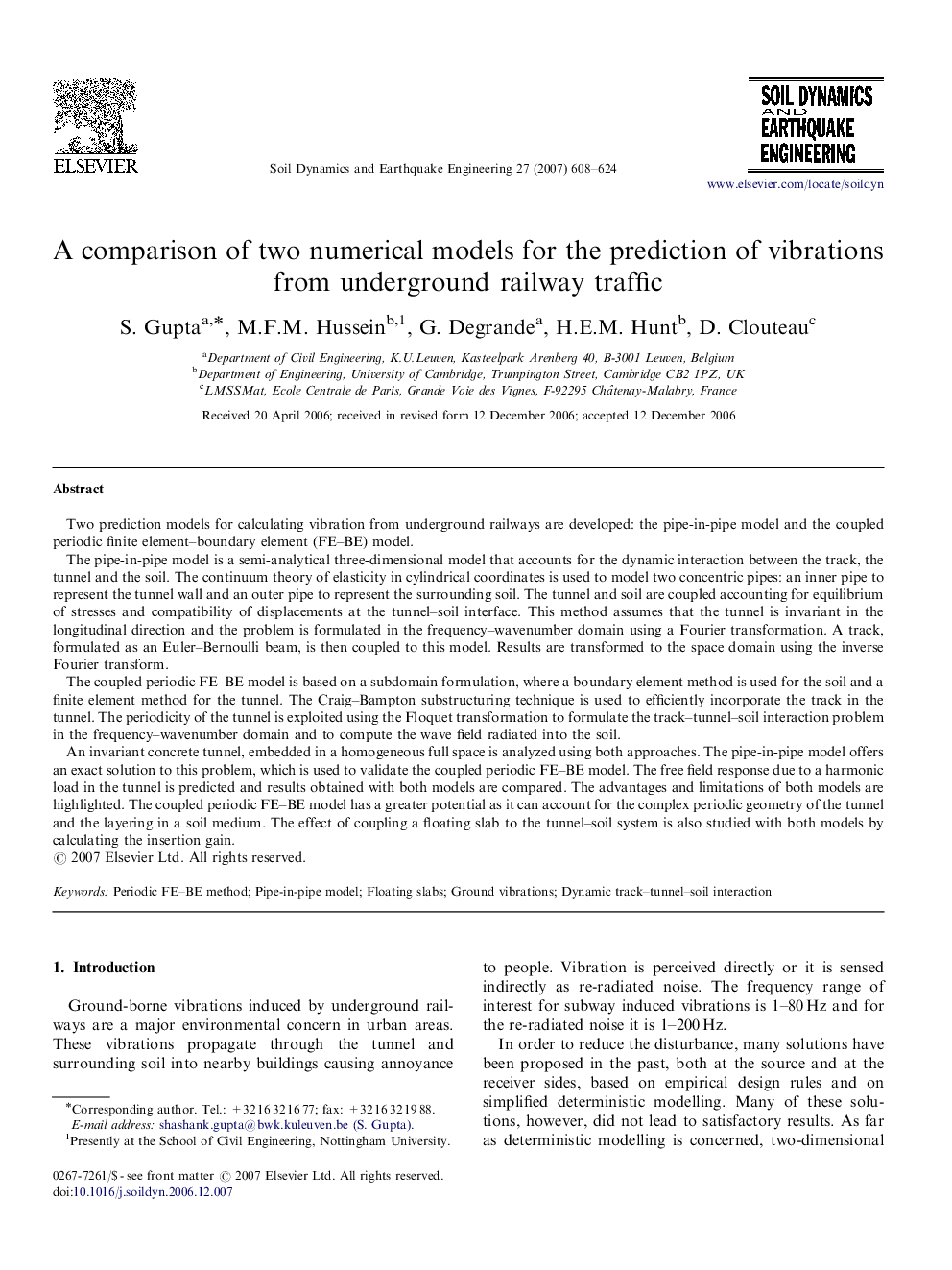| کد مقاله | کد نشریه | سال انتشار | مقاله انگلیسی | نسخه تمام متن |
|---|---|---|---|---|
| 305247 | 512877 | 2007 | 17 صفحه PDF | دانلود رایگان |

Two prediction models for calculating vibration from underground railways are developed: the pipe-in-pipe model and the coupled periodic finite element–boundary element (FE–BE) model.The pipe-in-pipe model is a semi-analytical three-dimensional model that accounts for the dynamic interaction between the track, the tunnel and the soil. The continuum theory of elasticity in cylindrical coordinates is used to model two concentric pipes: an inner pipe to represent the tunnel wall and an outer pipe to represent the surrounding soil. The tunnel and soil are coupled accounting for equilibrium of stresses and compatibility of displacements at the tunnel–soil interface. This method assumes that the tunnel is invariant in the longitudinal direction and the problem is formulated in the frequency–wavenumber domain using a Fourier transformation. A track, formulated as an Euler–Bernoulli beam, is then coupled to this model. Results are transformed to the space domain using the inverse Fourier transform.The coupled periodic FE–BE model is based on a subdomain formulation, where a boundary element method is used for the soil and a finite element method for the tunnel. The Craig–Bampton substructuring technique is used to efficiently incorporate the track in the tunnel. The periodicity of the tunnel is exploited using the Floquet transformation to formulate the track–tunnel–soil interaction problem in the frequency–wavenumber domain and to compute the wave field radiated into the soil.An invariant concrete tunnel, embedded in a homogeneous full space is analyzed using both approaches. The pipe-in-pipe model offers an exact solution to this problem, which is used to validate the coupled periodic FE–BE model. The free field response due to a harmonic load in the tunnel is predicted and results obtained with both models are compared. The advantages and limitations of both models are highlighted. The coupled periodic FE–BE model has a greater potential as it can account for the complex periodic geometry of the tunnel and the layering in a soil medium. The effect of coupling a floating slab to the tunnel–soil system is also studied with both models by calculating the insertion gain.
Journal: Soil Dynamics and Earthquake Engineering - Volume 27, Issue 7, July 2007, Pages 608–624